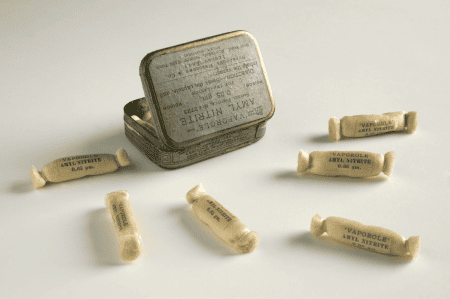This is an automatically translated article.
Myopain 150 is used to treat muscle spasticity after stroke in adults, to treat skeletal muscle hypertonia, thromboembolic diseases, ... So how to use Myopain? What does myopain do? Let's learn about the use of Myopain 150 through the article below.
1. Uses of Myopain 150
1.1 Indications for the symptomatic treatment of spasticity after stroke in adults. Treatment of pathological increase in skeletal muscle tone in neurologic disorders (pyramidal tract lesions, multiple atherosclerotic lesions, cerebrovascular accident, spinal cord disease, encephalomyelitis...). Increased muscle tone, muscle spasms, and spasms associated with motor diseases (eg, spondylolisthesis, spinal rheumatism, lumbar and neck syndromes, arthropathy of the great joints). Rehabilitation after trauma surgery - orthopedic. Treatment of thrombotic diseases (occlusive atherosclerotic disease, diabetic vascular disease, thromboembolic vasculitis, Raynaud's disease, diffuse scleroderma) as well as syndromes arising on the basis of impaired differentiation neuro-vascular distribution (cyanosis of extremities, dyskinesia due to episodic neuropathy - pulse). 1.2 Dosage - How to take Myopain 150 Adults:
Oral, daily dose is 150-450 mg, divided into 3 equal parts depending on the needs and tolerance of each patient.
Special populations:
For patients with renal impairment: Information on the use of the drug in patients with renal impairment is limited, however, an increase in the incidence of adverse events has been observed in this group of patients. Therefore, for patients with moderate renal impairment, it is necessary to determine the dose for each patient in combination with close monitoring of disease status and renal function. The use of tolperison is not recommended in patients with severe renal impairment.
For patients with hepatic impairment: Information on the use of the drug in patients with hepatic impairment is limited, however, an increase in the incidence of adverse events has been observed in this group of patients. Therefore, for patients with moderate hepatic impairment, it is necessary to determine the dose for each patient in combination with close monitoring of disease status and liver function. The use of tolperison is not recommended in patients with severe hepatic impairment.
For children : The safety and effectiveness of tolperison in children have not been established.
1.3 Overdose and Management Data on tolperisone overdose are rare. Tolperison has a wide therapeutic margin. The highest daily dose recorded in the literature was up to 600 mg without any symptoms of serious toxicity. Irritation has been observed after treating children with oral doses of 300-600 mg per day. In acute preclinical toxicity studies, high doses of tolperisone have been associated with ataxia, tonic-clonic seizures, dyspnea, and respiratory paralysis. Tolperison has no specific antidote. If an overdose is encountered, supportive and symptomatic treatment should be given.
2. Side effects when taking Myopain 150
Undesirable effects when using tolperison are mainly manifestations on the skin, subcutaneous tissue, systemic disorders, neurological disorders and gastrointestinal disorders. Hypersensitivity reactions: most reactions are not serious and are reversible. Very rare, life-threatening hypersensitivity reactions. Confusion (very rare). Increased sweating (rare).
3. Note when taking Myopain 150
Contraindications:
Hypersensitivity to tolperison or substances with chemical structure similar to eperisone or excipients. Mechanical weakness. Use with caution in allergic patients, in patients with hepatic and renal impairment. Hypersensitivity Reactions:
Post-marketing, the most commonly reported adverse reactions to tolperison are hypersensitivity reactions, ranging from mild cutaneous reactions to severe systemic reactions such as anaphylaxis. Possible manifestations include rash, redness, urticaria, pruritus, angioedema, tachycardia, hypotension, dyspnea. The risk of hypersensitivity reactions is generally higher in women, in patients with a history of allergy or hypersensitivity to other drugs. Caution should be exercised when tolperisone is used in patients sensitive to lidocaine because of the potential for cross-reactivity. Patients should be warned about the possibility of hypersensitivity reactions when using tolperison. In case of any manifestation of hypersensitivity, the drug should be stopped immediately and consulted a doctor promptly. Tolperison should not be re-administered in patients with a history of hypersensitivity to tolperison. Dosage recommendations:
Pregnancy : In animal tests, tolperisone was not teratogenic.
In humans, due to the lack of appropriate clinical data, tolperison should not be used during pregnancy (especially during the first trimester) unless the potential benefit to the mother outweighs the risk to the fetus. .
Lactation: It is not known whether tolperison is excreted in breast milk, therefore tolperison should not be used during lactation.
Driving and operating machinery: because the drug can cause dizziness and lightheadedness, so caution should be exercised when driving and operating machinery.
If you experience dizziness, lightheadedness, loss of concentration, seizures, blurred vision, or muscle weakness when taking tolperison, the patient should consult a doctor.
Please dial HOTLINE for more information or register for an appointment HERE. Download MyVinmec app to make appointments faster and to manage your bookings easily.













